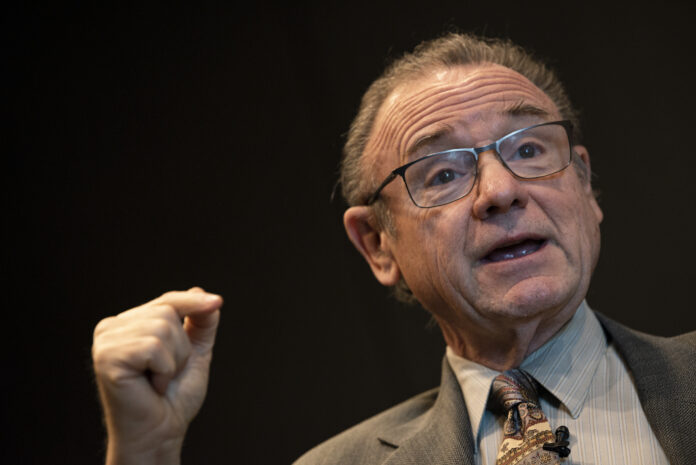
Inflation is straining life in the Permian Basin with everything from high gasoline and diesel prices to the increasingly steep costs of grocery shopping and dining out.
Waco economist Ray Perryman and Odessa restaurateur Roy Gillean said Monday that the war in Ukraine, oilfield production costs rising along with oil and natural gas prices, supply chain problems and other issues are to blame.
Referring to a recent Bloomberg News report showing Midland with the worst inflation of any city in the country, Perryman said the Midland numbers were estimates derived from the U.S. Consumer Price Index’s survey of 20 metro markets including Dallas-Fort Worth and Houston.
“Those numbers are subject to a high degree of error and a lot of month-to-month fluctuation,” said Perryman, who lives in Odessa. “I don’t put a great deal of stock in them, but it is quite likely that prices are somewhat higher than average locally.
“Odessa is likely somewhat similar to Midland, although its housing costs, a significant component of the CPI, are lower.”
Perryman said much of the current inflation is transitory, driven by supply chain issues and energy prices following the Ukrainian invasion on the supply side and excess funds from federal stimuli on the demand side, which he called “a classic case of too much money chasing too few goods.
“The combination of those issues dissipating and the Federal Reserve’s actions — of raising interest rates — should bring rates down by late in the year, although much depends on the course of the war and China’s stance on production interruptions,” he said, adding that a recent increase in imports suggests progress with supply side issues.
“Over the longer term,” Perryman told the Odessa American, “we are likely to have some modest residual inflation at higher levels than we have seen over the past decade or so, something on the order of two to three percent per year whereas we had been seeing one to two percent.
“This increase stems from two primary sources. First, the long-term workforce shortage in the country will tend to push up wages. Second, the added federal spending and debt during the pandemic, while much of it was necessary, will nonetheless generate an excess of money in the system as the Federal Reserve gradually restores its balance sheet to more normal levels.
“While prices are higher locally, average incomes are also higher, which somewhat offsets the effects of inflation for those who are not on relatively fixed incomes. Moreover, the energy production in the Permian Basin is a key factor in providing long-term, stable supplies of energy that will ultimately reduce inflation not only locally but also nationally and globally.”
Gillean, co-owner of the Barn Door Restaurant, said increased food supply costs had forced him to charge $2 more for entrees and $1 more for lunch entrees and meals for senior citizens and children. “We’re trying hard to keep costs where they need to be,” Gillean said.
“Every time we do a food order, we get the very best prices we can for our customers. They’re emailed so they will be there for me when I come in on Monday and I can compare the prices and quality of every order and not have to raise prices more than I have already. Before you know it, people will stop coming out to eat because it is too expensive.
“Food is expensive everywhere,” he said. “Milk over $6 a gallon? That’s crazy.”
Gillean said the cost of all meats has gone up dramatically, especially chicken, which was already expensive but is now “sky high.”



